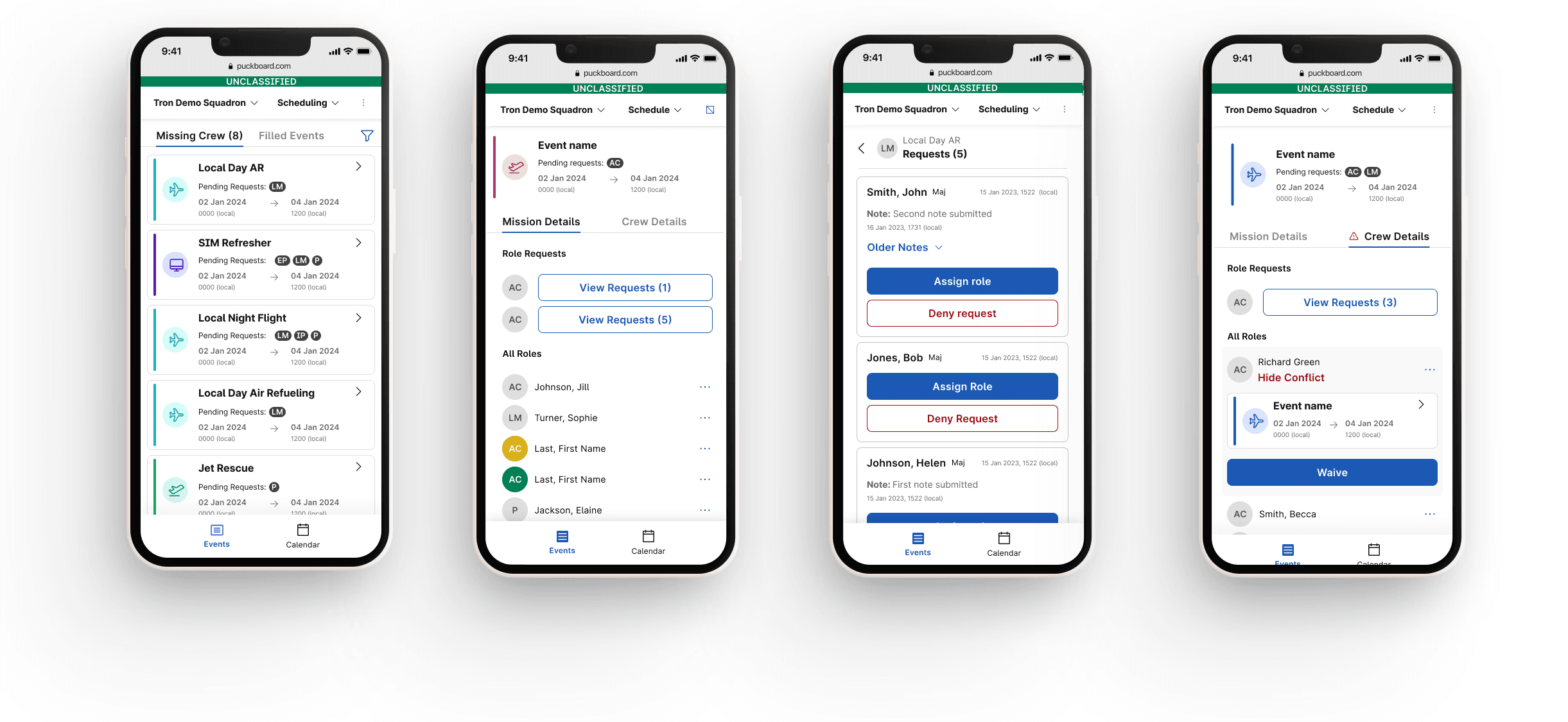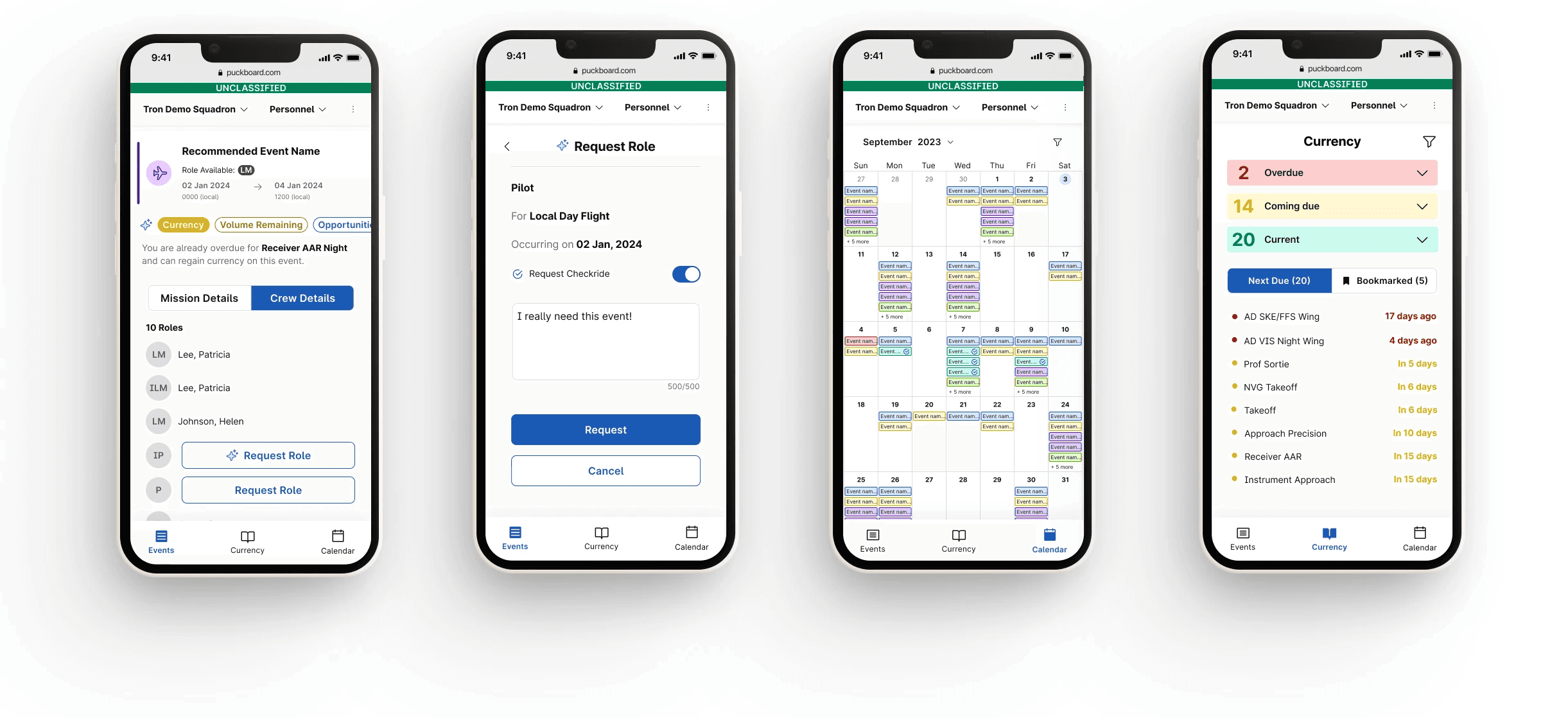UI/UX Designer
Length
2 months
Team
Individual
Year
2024
🚀 Impact
Mobile adoption skyrocketed by 2,440%! Before the redesign, only 5 users engaged with the mobile experience. After implementing structured navigation, role-based access, and task-focused UI, adoption soared to 127 users.
The U.S. Air Force flies missions to respond quickly to threats, support ground forces, and carry out important tasks like rescue operations. Squadrons have tedious, manual processes to schedule missions, involving referencing whiteboards, physical papers, and multiple outdated websites. More time spent scheduling means less time in the skies. Puckboard is a 6,000+ monthly user digital platform that mitigates aircrew frustrations with one simple and intuitive experience so they can focus on flying.
Aircrew members are always on the go, so optimizing for a familiar, easy-to-use mobile version was crucial. This specific project aimed to deliver a cohesive and user-friendly experience across the platform, ensuring all users could efficiently navigate and leverage the scheduling features.
Product Comparison
Research & Discovery
Several US Air Force squadrons were interviewed through online calls and they shared similar insights and frustrations with the mobile experience. I then concluded their pain points from a design perspective:
Using user flows to understand scheduler and aircrew complex tasks
I created a user flow to map out the steps users would take to navigate pages based on their role as an aircrew member (pilots, loadmasters) or mission scheduler. Defaulting to the member view instead of scheduler allows squadron members to carry out their main tasks more quickly on the go as schedulers use desktop to plan out missions.
Design Process
Main feature: Viewing Mission Information and Crew Members
Balancing all important information needed to fly missions while keeping a simple experience that wasn't too overwhelming was challenging for me. User insights and design feedback allowed me to hone in on my visual design skills to ensure better display of information.
Product Showcase
Schedulers
Schedulers can view missions that are filled or have empty seats and view requests to approve or deny.

Aircrew
Aircrew members can view their upcoming events, AI-recommended events, pending requests and can request for events.

Feedback & Results
Learnings & Reflection







